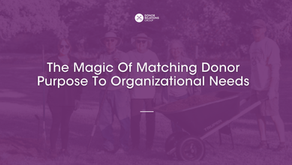The Four Pillars of Donor Retention
- Lynne Wester

- Feb 22, 2024
- 3 min read

I often say that the most important measure of any fundraising shop isn’t how much money you raise at your nonprofit, but rather how many donors you retain from year to year.
The statistics at the FEP Fundraising Effectiveness Project are startling! They show that donor retention rates continue to drop, and unfortunately, they aren’t going to get any better unless we, as fundraisers, change the way we work.
So, what do we do? We build a new roadmap aimed at retention—one that goes beyond what we do and starts to explore how we can deepen relationships and create a successful renewal journey.
Enter, the next book in our Four Pillars series—The Four Pillars of Donor Retention: Techniques and Strategies to Retain Donors and Grow Revenue (coming soon)! My colleague, Madelyn Jones, and I are writing this book together and can't wait to share it with you. Below is a brief introduction to the Four Pillars of Donor Retention framework:
Pillar One: Identification
The first pillar of donor retention, Identification, serves as the foundational step in creating a successful donor retention strategy. This crucial element involves recognizing and understanding the diverse array of individuals who support the organization. By delving into the demographics, preferences, motivations, and giving histories of our donors, our organizations can tailor connections with donors more effectively. Identification goes beyond mere acknowledgment of donors as contributors; it involves a deep dive into who these donors are, what drives them to give, and how they prefer to engage with the cause. This includes identifying donors who are highly likely to retain as well as those who are less likely and are low ROI. By accurately identifying the unique attributes of each donor, nonprofits can develop more meaningful relationships—which ultimately leads to increased loyalty and sustained support.
Pillar Two: Operationalization
Operationalizing donor retention involves establishing and implementing systematic processes and best practices to manage and nurture relationships with donors effectively. It focuses on integrating donor engagement strategies into the organization's daily operations, ensuring consistent and meaningful interactions with donors. Data and process play crucial roles in donor retention as they enable organizations to understand donor behaviors, preferences, and engagement patterns. This approach aims to enhance donor satisfaction, loyalty, and long-term support by providing a structured framework for recognizing, communicating with, and appreciating donors in a way that aligns with the organization's mission and goals.
Pillar Three: Connection
The focus of pillar three, Connection, involves leveraging communication to foster stronger connections with audiences—which is essential for organizations aiming to build lasting relationships and loyalty. The key themes include understanding audience needs, crafting compelling messages that resonate, and employing different channels effectively to engage and retain interest. This approach is crucial for organizations looking to strengthen their brand and ensure their messages lead to meaningful engagement and loyalty from their target audience.
Pillar Four: Renewal
Renewal is a significant part of the donor retention process because it involves re-engaging past donors and motivating them to continue their support. This phase focuses on reinforcing the value and impact of their contributions— reminding them why they chose to support the organization initially and encouraging them to renew their commitment. Effective renewal strategies foster a sense of ongoing partnership and appreciation, making donors feel valued and more likely to remain engaged with the organization over time. It isn’t just about making them feel good, delivering impact, and thanking them. It’s about the strategies and tactics utilized with our audiences as we ask them for continued support and increased loyalty.
Why this topic? Why now?
Donor retention is key because it signifies a sustainable support base for your organization. Retention indicates our donors believe in our cause and see value in continuing their contributions. Furthermore, retaining donors is more cost-effective than acquiring new ones, as it leverages existing relationships and builds on the trust and engagement already established. High retention rates are often a marker of organizational health, mission delivery effectiveness, and donor satisfaction—which leads to a more predictable revenue stream and greater impact over time.
Are you ready to join the retention revolution with me? My team and I will be teaching this framework in person for the first time March 20-22 in Chicago, and I can’t wait to share it with y’all!
By Lynne Wester





